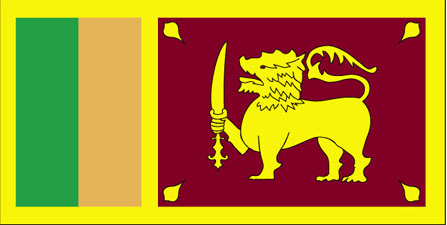To help inspire or plan your trip to Sri Lanka, some of its major attractions
for travellers are shown below, including some of the best natural, historical, cultural and adventure sites in the country.
These include all of UNESCO World Heritage Sites for Sri Lanka which represent the best
of the world's cultural and natural heritage.
Click on the icons below to focus on specific types of features
(click again to return to all).
|
|
|
|
|
|
|
|
|
|
|
|
 |
|---|---|---|---|---|---|---|---|---|---|---|---|
| Natural | History | Wildlife | Trekking | Cities | Religious Monument | Boat Journey | Rail Journey | Diving | Cultural | Adrenaline | UNESCO WHS |
Religious Monuments in Sri Lanka
| Anuradhapura | |
|---|---|
Anuradhapura was founded in the 4th century BC and was the political and religious capital of Sri Lanka for 1,300 years until it was abandoned in 993 following a series of attacks by invaders from southern India. The ruins include palaces, monasteries and monuments such as the Ruvanvalisaya Dagoba (with a 90m high dome) and the Smadhi Buddha. A sanctuary near the Brazen Palace contains a bodhi tree which supposedly originated from a cutting from the tree under which the Buddha gained enlightenment. Close to Anuradhapura lies Mihintale, the site where the King of Anuradhapura was converted to Buddhism in 247 BC and therefore regarded as the cradle of Buddhism in Sri Lanka. There are many pagodas, monasteries and caves in the site which is accessed by climbing 1840 stone steps, offering spectacular views over the surrounding plains and back to Anuradhapura. UNESCO World Heritage Site: Sacred City of Anuradhapura | |
| Polonnaruwa | |
|---|---|
After the destruction of Anuradhapura in the 10th century, Polonnaruwa became the capital city. The Chola occupiers built many monuments to Shiva and their Brahmanism religion before the reconquest of Ceylon in 1070. The city's golden age occurred in the 12th century when the rulers Parakramabahu I and Nissamkamalla I built a vast garden city of palaces and temples whose ruins are well preserved. Monuments of note included the Lankatilaka with a huge image of the Buddha, the rock sculptures of the Gil Vahara, the wall paintings of Tivanka Pilimage which illustrate previous lives of the Buddha, the enormous relic chamber of Rankot Vihara and the Temple of the Tooth Relic which once held the tooth of the Buddha. The city fell into decline in the 13th century and the capital was moved to Kurunegala. UNESCO World Heritage Site: Ancient City of Polonnaruwa | |
| Golden Temple of Dambulla | |
|---|---|
The Golden Temple of Dambulla is the largest and best-preserved cave-temple complex in Sri Lanka, which has been a site of pilgrimage for Buddhists for over two millennia. Dating to the 1st century BC, the temple comprises five caves and has been continuously renewed and transformed since. The colourful Buddhist mural paintings cover some 2,100 square metres and there are also 157 Buddhist statues. UNESCO World Heritage Site: Golden Temple of Dambulla | |
| Kandy | |
|---|---|
Kandy became capital of the kingdom in 1592 and resisted European domination for hundreds of years. It is most famous as a scared site of pilgrimage for Buddhists, who flock to see Dalada Maligawa, the Temple of the Tooth, which contains the sacred tooth of the Buddha, taken from his funeral pyre in 543 BC and brought to Sri Lanka in the 4th century AD. Each evening the casket containing the tooth relic is put on display during the Thewawa ceremony whilst the city hosts the spectacular Esala Perahera festival every July or August, when thousands of dancers and hundreds of elephants march through the town with a replica of the tooth carried on a richly decorated elephant. Elsewhere in town, the Peradeniya Botanical Gardens contain 4,000 species of plants including a massive weeping fig tree, numerous orchids and the rare Coco de Mer coconut tree while a performance of Kandian dancers and fire eaters is worth checking out. UNESCO World Heritage Site: Sacred City of Kandy | |


